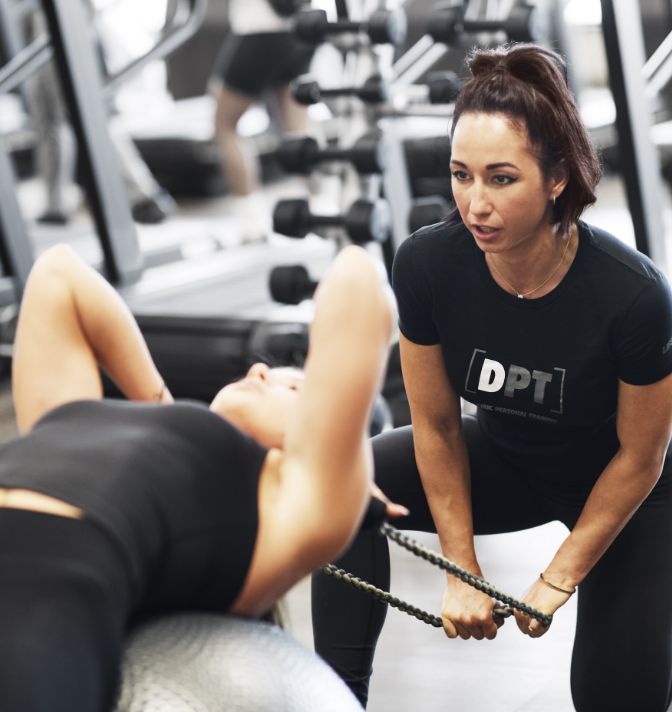Fitness advice looms large on social media, but the saturation isn’t synonymous with credibility or service. Quite the opposite: Several recent studies have found that, far from being helpful, much online fitness-related content does more harm than good. (Learn more at “The Ugly Side of #Fitspo.”)
This is grim news for health-minded folks who seek out information and inspiration on social media. It’s also disconcerting even if you aren’t specifically looking for fitness content. The suggestive algorithms of various platforms make it likely that many users are engaging with fitness content from influencers who may lack expertise or credentials — but do have a financial interest in selling products, like fitness gear, outfits, and supplements.
So, what’s a modern exercise aficionado to do? While deleting apps is one option, going cold turkey isn’t the only way forward. Our experts offer their top dos and don’ts for engaging mindfully with fitfluencer content.
Do |
Take an Inventory |
As a first step, Jessi Kneeland, an author, speaker, and body-image coach, advises taking careful stock of the accounts you already follow and interrogating how that content makes you feel. If a brand or influencer sends you down a comparison spiral or makes you feel insecure, Kneeland, who uses the pronouns they/them, suggests you remove that content from your feed without remorse.
“A lot of people, especially women, often feel guilty or invalidate themselves for being triggered by a person online,” they say. “But if it impacts you, that’s enough of a reason to unfollow or mute someone, whether you know the person or not.”
Don’t |
Mistake Thin for Inspiration |
Be wary of accounts that promote specific and unrealistic body ideals. Studies have shown that exposure to images and messaging that urge fat loss and thinness can have an adverse effect on body satisfaction, mood, and self-perceived sexual attractiveness. This environment can also foster disordered eating.
You can expand your digital sphere of influence by searching hashtags like #healthateverysize, #normalizenormalbodies, and #joyfulmovement, says Kneeland. But they note that this isn’t a sure-fire way to avoid thinspiration; some creators will co-opt unrelated hashtags to boost their content.
Do |
Look for Expertise |
Too often, “we end up hearing the loudest voice in the room, which isn’t always the best perspective to follow,” says Andrew Moran, DPT, a physical therapist who specializes in working with endurance athletes. To help you separate the quality content from the clickbait, Moran recommends some healthy skepticism of the content creators who fill your feed.
Ask yourself:
- What fitness credentials and training background does this influencer have?
- Is the advice backed by science, or is it purely anecdotal?
- Does the account feature heavily edited, filtered, or otherwise doctored images?
- Is the person or brand pushing a one-size-fits-all solution to a problem or a single definition of health or fitness?
- Are they more focused on selling products than sharing information?
These questions don’t necessarily have right or wrong answers — selling a product, for instance, doesn’t automatically equate to low credibility — but taking the time to answer them for each account you follow can alert you to red flags that may otherwise go unnoticed.
Don’t |
Overcommit Yourself |
It’s easy to be lured to the profiles of personal trainers or professional athletes sharing snippets of their routines and to be tempted to take their methods for a test drive. But before you commit to hourslong sweat sessions or completely changing your approach to nutrition, athletic counselor Eiron Sanchez, MSW, recommends asking yourself: How much change can I withstand now?
“What works for one individual might not work for the masses,” says Sanchez, a mental health and mental performance coach who works primarily with collegiate and professional athletes. “The athlete or fitness account you’re following might have been training for 10, 15, or 20 years, depending on their level. Ultimately, you might want to see yourself in a similar position, but the key is determining the first step.”
Meet yourself where you are right now and consider your current fitness, energy, and overall stress levels to determine next steps. Make one or two changes at a time for a routine you can sustain.
Do |
Challenge Your Biases |
Just because a fitfluencer might have what conventional standards would deem a fit body doesn’t necessarily mean their advice is best. Seek out different viewpoints by filling your feed with marginalized bodies and various identities within those body types.
For example, if you’re an able-bodied marathoner, consider following runners with disabled bodies. If you’re a thin, cisgender yoga practitioner, seek out instructors who are fat and queer. Engage with accounts that expand the culturally defined standards of health and fitness.
By diversifying the body types you follow, you might also discover a need to confront your misperceptions about what exercise can and should look like. “Begin to see these people through the lens of compassion and empathy,” Kneeland says. As we humanize people and their lifestyles, we cultivate broader social acceptance.
Don’t |
Forget Your Self-Directed Prejudices |
Challenging your biases includes analyzing those you’ve internalized against yourself. Follow fitfluencers whose bodies look like yours, advises Kneeland. Expose yourself to people who possess — and even celebrate — your biggest insecurities. By normalizing those areas, you can reprogram prior beliefs about what your body looks like and how it functions.
Do |
Remember That You’re In Control |
Navigating a social media account does not have to be a passive experience. Though Instagram’s algorithm is powerful, users can have some control over their feeds. Be intentional about hitting the “Follow” button — research the content creator’s bio and affiliations before you do — and don’t feel guilty about unfollowing or muting any account that doesn’t satisfy your needs.
To hide a suggested post, click the three dots above that post and click “Not Interested.” You can also hide some ad content: Click your profile picture, navigate to Settings, and find the Accounts Center. Go to Ad preferences, then Ad topics, and use the search bar to add a “See less” filter to topics you’d rather not see.
None of these stopgaps is perfect — if you need to break up with an app for your physical or mental health, you can delete it. Remember, fitness advice, inspiration, and accountability exist beyond the confines of our smartphones. (For tips on finding and working with a trainer, visit “Why Using a Personal Trainer Can Help You Reach Your Fitness Goals.”)
Don’t |
Forget Your Why |
Social media can siphon your energy if you’re not a conscious player in that environment. And if fitspiration is what you’re after, it does little good to close the apps feeling too exhausted and unmotivated to pursue your fitness goals.
One way to stay present online and combat comparison fatigue is to use the initialism WWW. Coined by journalist Catherine Price, author of How to Break Up With Your Phone, it stands for: “What for? Why now? and What else?” When you opened Instagram, what were you looking for? Why are you scrolling right now? What else could you be doing?
If you’re going to engage with fitfluencer content, doing so with your purpose in mind can help save your sanity. (For guidance on articulating your why and shifting your fitness mindset, check out “Why Your Fitness Mindset Matters.”)






This Post Has 0 Comments